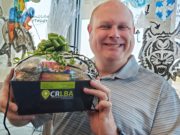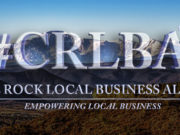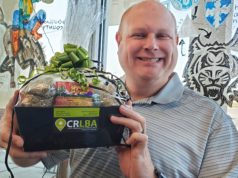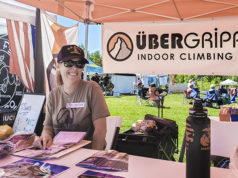Off Wolfensburger Road, under the old trees in Cedar Hill cemetery, lay some of the pioneers who first came to homestead in the area we now know as Castle Rock. When walking among the gravestones, the name of Alexander Scott can be found. Settling here in 1866, he and members of his family have been important members of the local community for six generations.
-
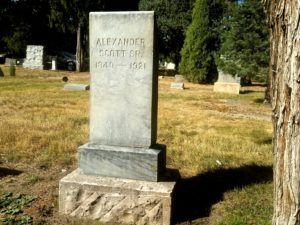
Pioneers of the Scott family are buried in Cedar Hill Cemetery in Castle Rock.
“They first came to Ellis Island, New York from Edinburgh, Scotland–most likely because of the famine that was going on over there at the time,” said Ed Scott, fifth generation of the Scott family. “Eventually they moved to Chicago.”
While in Chicago, Alexander heard about opportunities provided by the ‘Homestead Act.’ It was a federal plan designed to draw people to inhabit the Western territory. “Everyone was settling on the coasts in the cities–instead they wanted to bring people out here into these areas,” commented Kyle Scott, sixth generation of the Scott family.
Taking the chance to move west, the Scott family applied for a land claim of 160 acres in southern Colorado. For the next five years, they had to prove they could live on and successfully farm the parcel of land.
“It’s hard to imagine a time when they actually had to lure people out here,” commented Kyle Scott. However, at that time, most were choosing to settle in bustling coastal cities.
“It was my great-great-grandparents who first came to homestead here…and as his son Alexander Jr. grew up, he took over,” added Ed. Sewing the seeds of hard work paid off and they soon came to acquire more land, expanding the boundaries of their farm.
Surviving WWI and The Great Depression
As time progressed, caring for the farm was eventually taken over by their children. The year was 1914, and farming life was disrupted by the start of WWI as young men being shipped overseas to fight.
-
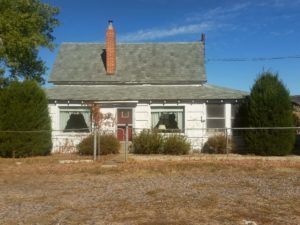
The house (and adjacent barn; not pictured) off Liggett Road that Walter Scott first purchased before leaving to fight in WWI.
Walter survived the front lines in France and was eventually shipped back home. When he arrived, he quickly realized things had taken a turn for the worst. “Things had been bad and his mother had to sell the house and barn while he was gone,” Ed said.
It didn’t take him long to find out who had purchased the property because the Town was so small. Saving money from his new job delivering mail between Sedalia, Larkspur and Castle Rock, he bought it back–some say, for twice the price.
Shortly after, he met young Ida and they fell in love. “My grandfather and grandmother were married on Christmas Day in 1919 and spent 67 years together, living in this house.” smiled Ed.
-
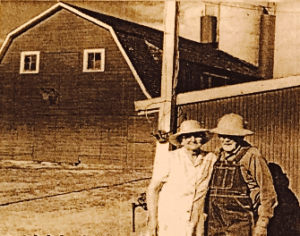
Ida and Scott, third generation of the Scott family, worked hard to build and maintain a successful farm in Castle Rock. They were happily married for 67 years.
Only leaving the ranch periodically to buy and sell his cattle, he planted his fields, using a one-row-planter, successfully cultivating corn and then wheat. “He went to wheat when the weather changed somewhat and they weren’t getting as much rain,” said Ed. It was the dairy cows that kept Ida busy; milking them and then selling the milk to a dairy in Larkspur.
Some years later, the depression hit, and times were hard for everyone. They used their resources to stay afloat, trying anything possible; even selling meat from their pigs. “Times were rough for everyone,” Ed continued, “My grandfather talked about hiring a young man named Phillip Miller to skin pigs for a dollar a day.”
-
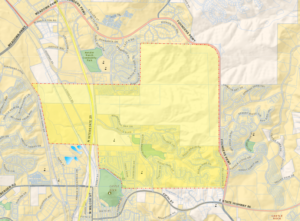
Walter Scott acquired his own ranch adjacent to the original homestead (sold by extended family to build Canyons South, Escovera and the Woodlands). Passed down, Scott Land and Cattle still owns land on both sides of I-25.
Due to the hard work of Walter and Ida, they were able to keep the farm alive. Their strong character also helped them recover and rebuild after the devastation of the great flood of 1965. But as generations went on, they eventually passed away, splitting up the land evenly between their three children.
Scott Land and Cattle today
While some of the land has since changed hands, much of the middle of Castle Rock remains under the ownership of a branch of the Scott family. “The land we are on now has been under six generations of owners,” noted Ed.
Carrying on the tradition to keep the land in the family, his sons Adam and Kyle now hold the deed to a portion of the land west of I-25, near their great-grandparents farm. Over the past few years, the plot of the land has seen some changes.
“Nothing on this part really grew well here, so the Town approached us and said that they needed to put a water line through it for the water treatment plant,” Kyle continued, “They also wanted to use it to hook up a bike path from Hangman’s Gulch to the Plum Creek trail.”
-
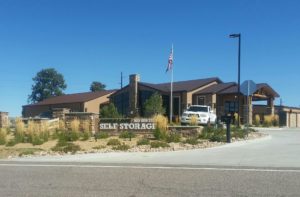
No longer able to use a portion of the land for farming purposes, they built a self-storage business to the west. Castle Lock Self Storage is located at 1936 Liggett Road in newly incorporated Castle Rock. - Unable to encourage cows to use it for grazing because of the new path, they built a self-storage facility on the land in the Town’s blooming ‘industrial’ area. “We didn’t want to sell our land, so we decided to put up Castle Lock Self Storage instead of letting it go to waste,” added Kyle.
And because ‘waste’ is not part of their vocabulary, rather than bulldozing the old pine trees that grew in the location of the building site, they called the Town to see if they could reuse them. “We spade the pine trees and donated them to the Town so they could use them at the entrance of Philip S. Miller Park.”
The Scott’s have always been invested in the community they have been a part of for 150 years. “If you can imagine, all the development you see out the window is mostly new in the last 40 years,” said Ed. “The high school was built on my grandfather’s corn field–my family gave the land for Douglas County High School.”
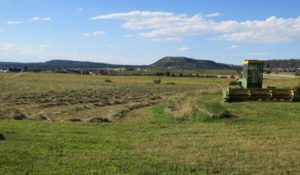 The more recent boom of Castle Rock’s economy, has put the family at a crossroads of trying to preserve the rich past but not being left behind. “We are still making hay from the field by our house off Liggett Road,” smiles Ed. “And our cattle still graze on the land on the other side of I-25, that reaches up to Founders Parkway.”
The more recent boom of Castle Rock’s economy, has put the family at a crossroads of trying to preserve the rich past but not being left behind. “We are still making hay from the field by our house off Liggett Road,” smiles Ed. “And our cattle still graze on the land on the other side of I-25, that reaches up to Founders Parkway.”
But as modernization changes the goods and services needed by residents, they know they need to make smart choices. “We have started to change over to focusing on the storage business,” said Kyle.
Working with the Town has helped them make the best use of their land and resources.
“You work with the Town when you are building on your land, within set limitations,” said Kyle. “Sometimes you have to have a certain amount of open space–or there might be some concessions and limits for what you can put on there.”
Having been longtime residents of Castle Rock, the Scotts have witnessed the lengthy planning that goes into seeing projects go from idea to completion.
“People get the impression that there are developers out there and they can do whatever they want,” said Kyle. “For example, they don’t realize that even if we plan to build things on the other side of the highway (on the land that stretches up to Founders Parkway), it would take a minimum of 20 years minimum for it to get done.”
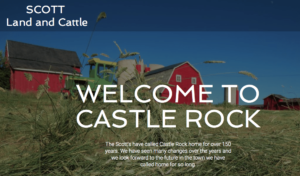
So instead of fighting the inevitable changes brought on by the Town’s economic success, they are choosing to embrace them. “Castle Rock is in good hands with one of the best Mayors (Paul Donahue) we have ever had,” Ed commented. “We’ve got the infrastructure and we are booming…it’s better than commercial stores standing vacant and everyone wondering what’s going on?”
For the future of Scott Land and Cattle, it’s all about perspective and trying to use their influence to make the community better. “People say that they moved here because it’s a small town–we try to keep that feel, especially at the storage business,” said Kyle. “That small town feel hasn’t really disappeared–you just have to look for it.”

